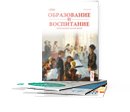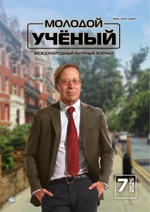One of the priorities of modern speech therapy is the task of identifying the special educational needs of a child with speech disabilities in order to predict his academic success and determine the educational standard of education at various age stages. Currently, in Russian speech therapy, the term «general speech underdevelopment» refers to speech disorders in which children not only have impaired formation of all components of the speech system related to its sound and semantic side with normal hearing and intelligence, but also have imperfect communicative behavior. The authors propose a classification option for the types of speech development in children with general speech underdevelopment with the allocation of sublevels. The article discusses a variant of the periodization of general speech underdevelopment, based on the allocation of a central neoplasm at each stage of development, due to which the restructuring and development of the child's speech-thinking activity takes place. This approach allows, from the point of view of the authors, to determine the variant of the program and the organizational form of training. During the diagnosis and qualification of a defect, the following variables must be taken into account: the primary link in the structure of the defect is the presence of an organic/ functional disorder; severity of severity; localization of the defect and its genesis; the adequacy and effectiveness of previous corrective action (if any), the defect's resistance to corrective action, willingness to collaborate and learn, the gender factor, the nature of the compatibility of the speech defect with features in the development of the cognitive, motivational and regulatory sphere, somatic well-being, which can significantly affect both the pace of learning of the child and on his adaptive capabilities to the conditions and forms of learning.
Keywords: speech development, psychophysical development, socio-psychological factors, speech therapy.
Introduction. Speech is the most important mental function unique to humans. Through speech communication, the reflection of the world in the mind of one person is constantly replenished and enriched by what is reflected in the public consciousness, associated with the achievements of all socio-industrial and cultural activities of mankind. Thus, speech is the basis of the communicative function, which is carried out through a particular language. Thanks to this, we perceive the prose of L. Tolstoy and E. Hemingway, the poems of A. Pushkin and V. Shakespeare, and use the theoretical heritage of D. Mendeleev and A. Einstein.
Mental processes such as perception, imagination, and memory are formed and developed on the basis of speech and its semantic unit, the word. The great importance of speech for the development of thinking and personality formation was repeatedly pointed out by L. S. Vygotsky, who wrote: «The development of oral speech is probably the most convenient phenomenon in order to trace the mechanism of behavior formation and compare the approach to these phenomena, typical for the doctrine of conditioned reflexes, with the psychological approach to them. The development of speech represents, first of all, the history of how one of the most important functions of a child's cultural behavior is formed, which underlies the accumulation of his cultural experience».
Speech is formed in the process of the general psychophysical development of the child. The conditions for the formation of normal speech include a normal central nervous system, normal hearing and vision, and a sufficient level of active verbal communication between adults and a child.In cases where the child's hearing is preserved, the intellect is not impaired, but there are significant speech disorders that cannot but affect the formation of his entire psyche, they speak of a special category of abnormal children, children with speech disorders.
The study, prevention and correction of speech disorders is carried out by the branch of speech pathology speech therapy (from the Greek logos — word and paideia — education). Speech therapy has historically developed as an integrative field of knowledge about mental and, more specifically, human speech activity, speech and language mechanisms that ensure the formation of speech communication in norm and pathology. The pedagogical foundations of speech therapy science were developed at the ICP RAO in the works of Prof. R. E. Levina and her staff and the period from 1965 to 1980. The formation of speech therapy in our country is also associated with the names of M. E. Khvattsev, O. P. Pravdina, R. E. Levina and others. The current stage in the development of speech therapy is associated with the development of scientific ideas about various forms of speech disorders, as well as the creation of effective methods to overcome them.
As L. I. Belyakova and E. A. Dyakova point out, the overwhelming number of children with speech disorders are enrolled in secondary schools and the number of such children is growing every year. Children with speech pathology, as a rule, have learning difficulties. The teacher's knowledge of the basics of speech therapy is necessary to find adequate forms of education and upbringing for such children.
The purpose of this work is the theoretical justification of the necessity and disclosure of the content of the problem of speech impairment.
Speech disorders are a collective term for deviations from the speech norm accepted in a given language environment, which completely or partially hinder speech communication and limit the possibilities of social adaptation of a person. As a rule, they are caused by abnormalities in the psychophysiological mechanism of speech, do not correspond to the age norm, cannot be overcome on their own and can have an impact on mental development. Specialists use various, not always interchangeable terms for their designation — speech disorders, speech defects, speech deficiencies, speech underdevelopment, speech pathology, speech abnormalities.
Children with speech disorders include children with psychophysical abnormalities of varying severity, causing disorders of the communicative and generalizing (cognitive) functions of speech. They are distinguished from other categories of children with special needs by their normal biological hearing, eyesight, and full-fledged prerequisites for intellectual development. The identification of these differentiating features is necessary to distinguish them from speech disorders observed in children with oligophrenia, mental retardation, the blind and visually impaired, children with early childhood autism, etc.
Biological and social risk factors are distinguished among the causes of speech disorders. The biological causes of speech disorders are pathogenic factors that affect mainly during intrauterine development and childbirth (fetal hypoxia, birth trauma, etc.), as well as for the first time in the months of life after birth (brain infections, injuries, etc.). Speech disorders, having arisen under the influence of any pathogenic factor, do not disappear themselves and without specially organized correctional speech therapy, they can negatively affect the entire further development of the child. In this regard, it is necessary to distinguish between pathological speech disorders and possible speech deviations from the norm caused by age-related features of speech formation or environmental conditions (socio-psychological factors).
Socio-psychological risk factors are mainly related to the mental deprivation of children. A negative impact on speech development may be caused by the need for a child of preschool age to simultaneously learn two language systems, excessive stimulation of the child's speech development, inadequate type of upbringing of the child, pedagogical neglect, i.e. lack of proper attention to the child's speech development, speech defects of others. As a result of these causes, a child may experience developmental disorders in various aspects of speech.
Classification of speech disorders. Children with speech disorders are divided into a number of subcategories depending on the etiopathogenesis, the clinical form of the speech defect, the depth and systemic prevalence of the speech disorder, the tasks, content and methods of speech therapy. Profound impairments of various aspects of speech, limiting the ability to use linguistic means of communication and generalization, cause specific deviations from other higher mental functions — attention, memory, imagination, verbal-logical thinking, emotional-volitional and personal spheres, etc., which often complicate the picture of a child's speech disorder. The qualitative specificity and severity of such secondary deviations are related to the form and depth of the speech disorder, as well as the degree of maturity of the child's speech system and other higher forms of behavior at the time of the pathological factor.
Speech disorders in children and adolescents are considered in various aspects:
- on the aspect of lesion localization and the psychophysical organization of speech activity (sensorimotor level; the level of meanings and meaning). On this basis, the severity of a number of speech defects is highlighted. This approach is close to the neuropsychological direction in the study of speech disorders and is most widely used in comprehensive studies of school-age children and adolescents.;
- on the aspect of etiopathogenesis. The organic and functional causes of the disorder and characteristic symptom complexes of speech disorders are distinguished. Currently, this approach is reflected in the clinical and pedagogical classification.
Violation of linguistic means of communication (speech components):
- phonetic and phonemic underdevelopment of speech (FFN), i.e. a violation of the processes of formation of the pronunciation system of the native language in children with various disorders due to defects in perception and pronunciation of phonemes;
- general speech underdevelopment (OHR 1st — 3rd level, poorly expressed general underdevelopment speech disorders), which combines speech disorders, i.e. those cases when, for various reasons, the formation of all components of the speech system related to sound and semantic aspects is disrupted in children.
Violations in the use of linguistic means of communication in speech activity (communicative aspect):
- stuttering;
- manifestations of speech negativism.
In this classification, writing and reading disorders are interpreted as delayed manifestations of FFN and/or ONR, caused in children by the lack of formation of phonetic and morphological generalizations in oral speech.
Conclusion. Speech therapy is a special branch of pedagogy, which is aimed at the study, upbringing and education of children, adolescents and adults suffering from speech pathology. Since speech is a complexly organized mental function, a deviation in its development and its violation, as a rule, are signs of serious changes in the state of the central nervous system. This means that not only speech suffers, but also all higher mental functions in general. Children with speech pathology, as a rule, have greater or lesser learning difficulties. The vast majority of children with speech impairments are enrolled in secondary schools. Since there may already be no pronounced signs of speech disorders at school age, teachers often associate difficulties in teaching such children with lack of upbringing, low parental control, and social neglect. These children require special attention from teachers.
First of all, children with learning difficulties, and especially in mastering the process of writing and reading, should be referred to a speech therapist. In addition, these children need a more favorable (facilitated) learning regime. Such a regime is characterized not by reducing the level of requirements for the assimilation of program material, but by the organization of the training regime. They need special psychological support from the teacher. This is expressed in encouragement, gentle tone of remarks, encouragement, etc. The tasks that are assigned to the class as a whole in the educational process should be detailed for such children, and the instructions should be more fragmented, i.e., they should be accessible for understanding and implementation. In cases where a child has persistent writing and reading errors, he should not be forced to repeat the same tasks many times. In this case, the child needs specialized speech therapy using correctional methods of teaching writing and reading.
When communicating with students with learning difficulties, the teacher should pay great attention to the quality of his speech, since the quality of the perception of educational material by children will depend on this. The teacher's speech should be slow, measured, consist of short and clear sentences, and emotionally expressive. And most importantly, the general background of the teacher's behavior and treatment of children (facial expressions, gestures, intonation) should be benevolent, make the child want to cooperate.
Given that the number of children with speech disorders and learning disabilities is growing every year, the teacher's knowledge of the basics of speech therapy will help him find adequate forms of education and upbringing for such children.
References:
- https://m.vk.com/wall-42142781_163
- https://lektsia-com.turbopages.org/turbo/lektsia.com/s/7x560e.html
- https://uchebnikfree.com/pedagogika-spetsialnaya-uchebniki/spetsialnaya-pedagogika-uch ebnika.html.
- Severe speech disorders. TNR. Motor and sensory alalia, dysarthria, rhinolalia, stuttering, childhood aphasia. — Текст: электронный //: [сайт]. — URL: https://doktorobrubov.ru/en/narusheniya-i-problemy/tyazhelye-narusheniya-rechi-klassifikaciya.html (дата обращения: 12.02.2025).







